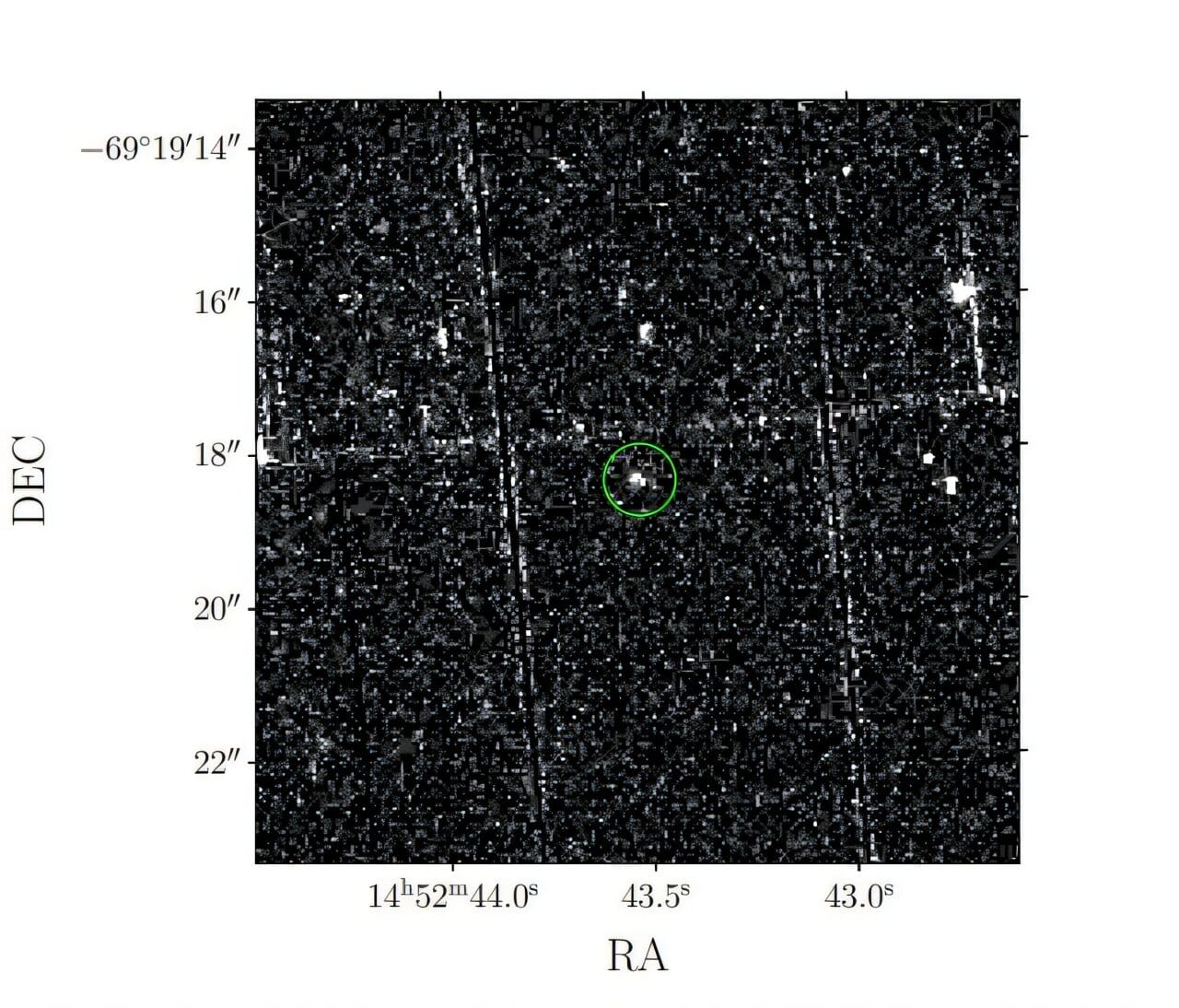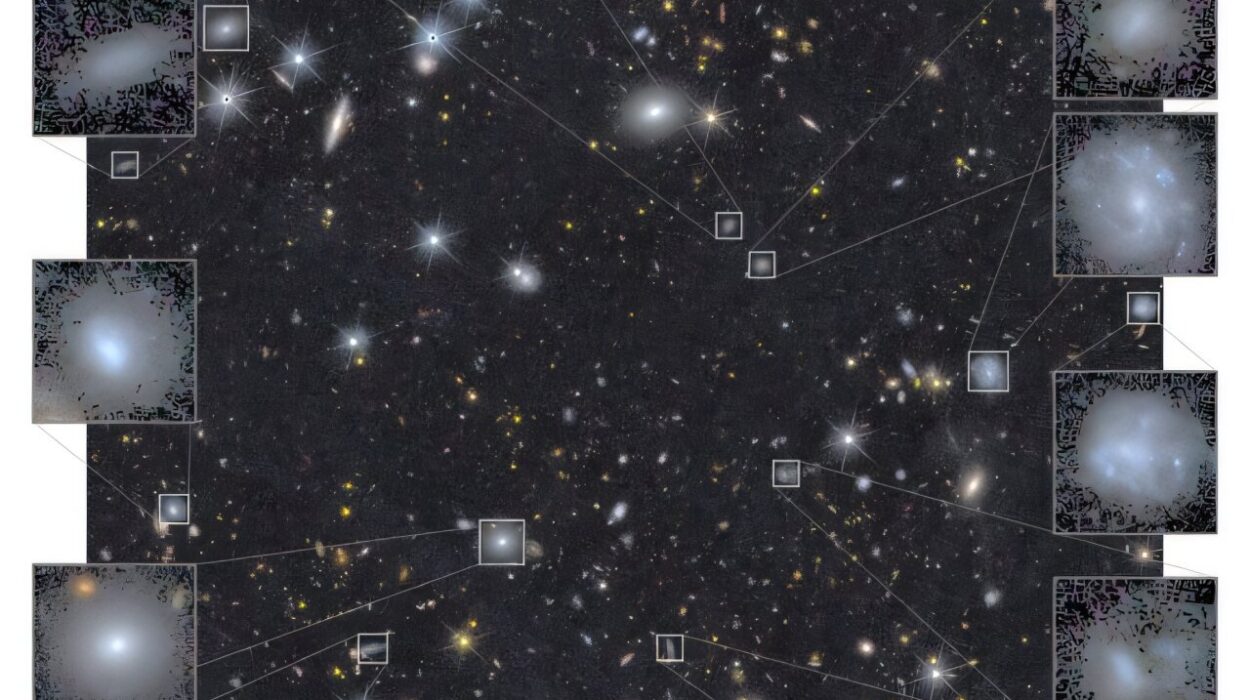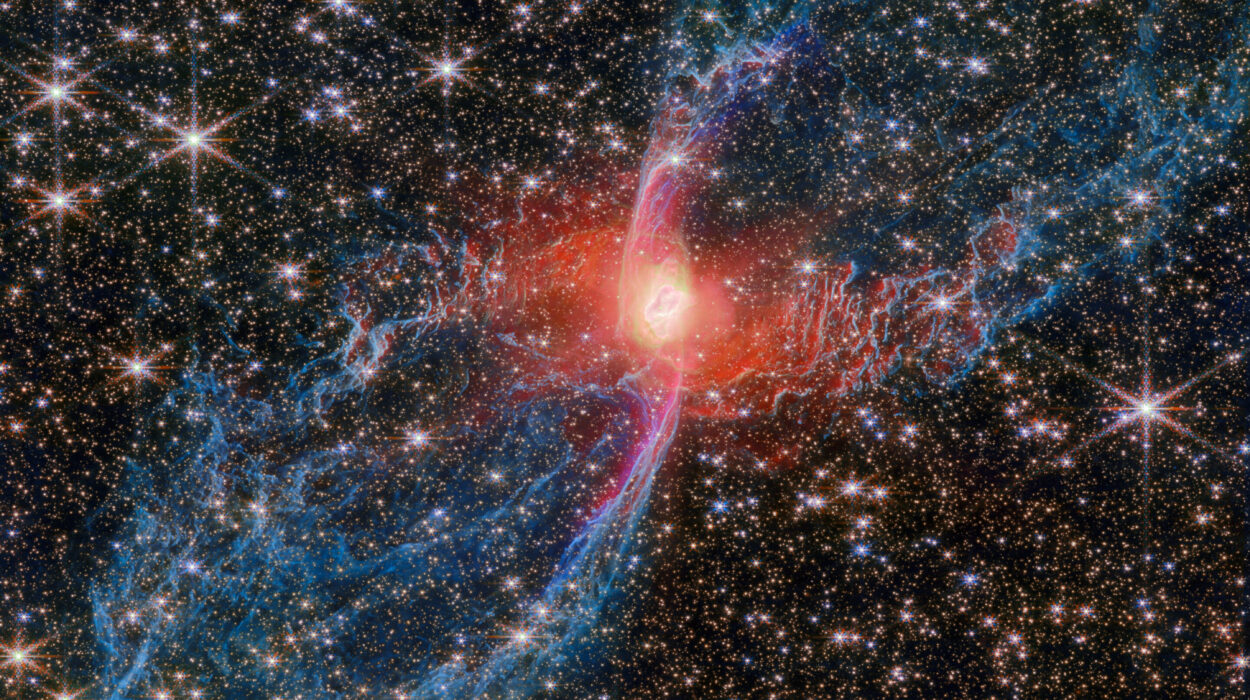In the vast silence of the cosmos, a strange voice has begun to speak—and it’s unlike anything astronomers have heard before.
In a discovery that’s captivating the world of astrophysics, an international team of scientists led by Akash Anumarlapudi of the University of Wisconsin–Milwaukee has identified a mysterious and powerful signal from deep space. Dubbed ASKAP J144834−685644 (or ASKAP J1448−6856 for short), the object is a newly detected long-period radio transient (LPT)—a rare and still poorly understood class of cosmic radio emitters. The findings were published on July 17 on the arXiv preprint server, and they are already sparking intense discussion about what, exactly, we are witnessing.
The signal, which repeats every 1.5 hours, carries a fingerprint unlike any other known cosmic source. It is powerful, polarized, and periodic—flaring and fading with rhythmic intensity, suggesting the presence of an unusual, possibly rotating stellar remnant. But while it talks, scientists still don’t know what kind of cosmic creature is speaking.
The Voice of a Strange Star
To understand the significance of ASKAP J1448−6856, it helps to first understand the enigma of long-period radio transients. Unlike typical pulsars—rapidly rotating neutron stars that emit beams of electromagnetic radiation like cosmic lighthouses—LPTs operate on a much slower timescale. Their pulse periods stretch from several minutes to even hours, defying expectations for compact objects like neutron stars or white dwarfs, which typically rotate far more quickly.
ASKAP J1448−6856 is the latest addition to this rare family. It emits a repeating signal every 5,400 seconds (or 1.5 hours), and what’s more, it does so across a wide range of the electromagnetic spectrum—from radio waves to X-rays and even with variability in visible light. That makes it one of the very few LPTs known to exhibit behavior across such a broad range of wavelengths.
Its radio emissions are not only periodic but also polarized, meaning that the orientation of the electromagnetic waves is organized, not random. This is particularly telling: strong polarization often points to the presence of powerful magnetic fields, and indeed, this source appears to be threaded with magnetism that could exceed 1,000 Gauss—several thousand times stronger than Earth’s magnetic field.
The Australian Square Kilometre Array Pathfinder (ASKAP), a highly sensitive array of 36 radio dishes spread across the Australian Outback, first detected the signal during a search for circularly polarized radio sources. The signal stood out immediately: not just for its strength and periodicity, but for its distinctive spectral features, which revealed a steep drop-off in emission at frequencies above 1.5 GHz.
“This is a fascinating source,” said Anumarlapudi. “Its narrowband nature, strong polarization, and periodicity all suggest a highly magnetized, rotating object. But its emission across the spectrum adds a layer of complexity we haven’t seen in most other LPTs.”
A Magnetic Mystery
So what could ASKAP J1448−6856 actually be?
The research team’s best hypothesis, based on the signal’s characteristics and multiwavelength modeling of its spectral energy distribution (SED), is that it could be a magnetic white dwarf—a highly compact, Earth-sized remnant of a dead star—with a powerful magnetic field and a companion star, forming a binary system viewed nearly edge-on from Earth.
In this scenario, the white dwarf’s magnetic field could be accelerating charged particles, emitting polarized radio waves as it rotates. The binary’s orbital dynamics might also produce variability in optical and X-ray wavelengths.
But that’s not the only possibility.
The team also considers that it might be an isolated white dwarf pulsar—an exceptionally rare type of object, possibly the white dwarf equivalent of a neutron star pulsar. Alternatively, it could be a transitional millisecond pulsar, a neutron star that switches back and forth between emitting in radio and X-rays as it toggles between accreting material and rotating as a pulsar.
Each of these possibilities is exotic. All stretch our current understanding of how compact stellar remnants behave. And none are a perfect fit.
“This source doesn’t fall neatly into any existing category,” the researchers write. “Its combination of polarization, frequency-dependent emission, and multiwavelength variability challenges existing models of compact object emission.”
Listening to the Universe’s Deepest Secrets
Long-period radio transients are not just oddities. They may hold keys to solving some of the most profound mysteries of the cosmos.
If some LPTs are magnetars—neutron stars with magnetic fields a thousand trillion times stronger than Earth’s—then they might help explain the origins of other puzzling phenomena, like fast radio bursts (FRBs), those fleeting but intense radio pulses that appear seemingly out of nowhere. If they are magnetic white dwarfs or white dwarf pulsars, then they could reshape our understanding of the end stages of stellar evolution.
And in any case, the very fact that such objects exist, rotating so slowly yet emitting such powerful and polarized radio waves, is a scientific challenge.
Just a few decades ago, astronomers believed they had a solid understanding of compact stellar remnants. White dwarfs cooled and faded. Neutron stars became pulsars or magnetars. Black holes vanished behind their event horizons. But discoveries like ASKAP J1448−6856 suggest that the universe has far more nuance—and far more surprises—than we imagined.
Each new LPT adds a piece to a growing mosaic, one that is beginning to reveal a hidden side of the night sky. In this case, ASKAP J1448−6856 brings a particularly valuable piece: it doesn’t just speak in radio—it sings across the spectrum, allowing astronomers to triangulate its nature using multiple cosmic instruments.
“Combining ASKAP J1448−6856 with the growing number of long-period radio transients adds to the variety of multi-wavelength behavior,” the authors write, “and will help deepen our understanding of this emerging population (or, indeed, populations).”
The Future of Transient Astronomy
ASKAP J1448−6856 is just the beginning.
With facilities like ASKAP, South Africa’s MeerKAT, and eventually the Square Kilometre Array (SKA)—the world’s largest radio telescope now under construction—astronomers are preparing to listen to the sky in greater detail and sensitivity than ever before. These instruments will likely reveal dozens, perhaps hundreds, of long-period transients, each with its own unique signature.
For now, ASKAP J1448−6856 stands as a luminous milestone on this journey: a signal from the void that defies our expectations, beckoning us to look deeper, to listen harder, and to imagine anew the strange and beautiful forces at work in our universe.
In the words of Albert Einstein, whose curiosity reshaped our understanding of the cosmos: “The important thing is not to stop questioning. Curiosity has its own reason for existence.”
As we peer deeper into the sky, the questions only multiply. But so do the wonders.
Reference: Akash Anumarlapudi et al, ASKAP J144834-685644: a newly discovered long period radio transient detected from radio to X-rays, arXiv (2025). DOI: 10.48550/arxiv.2507.13453






